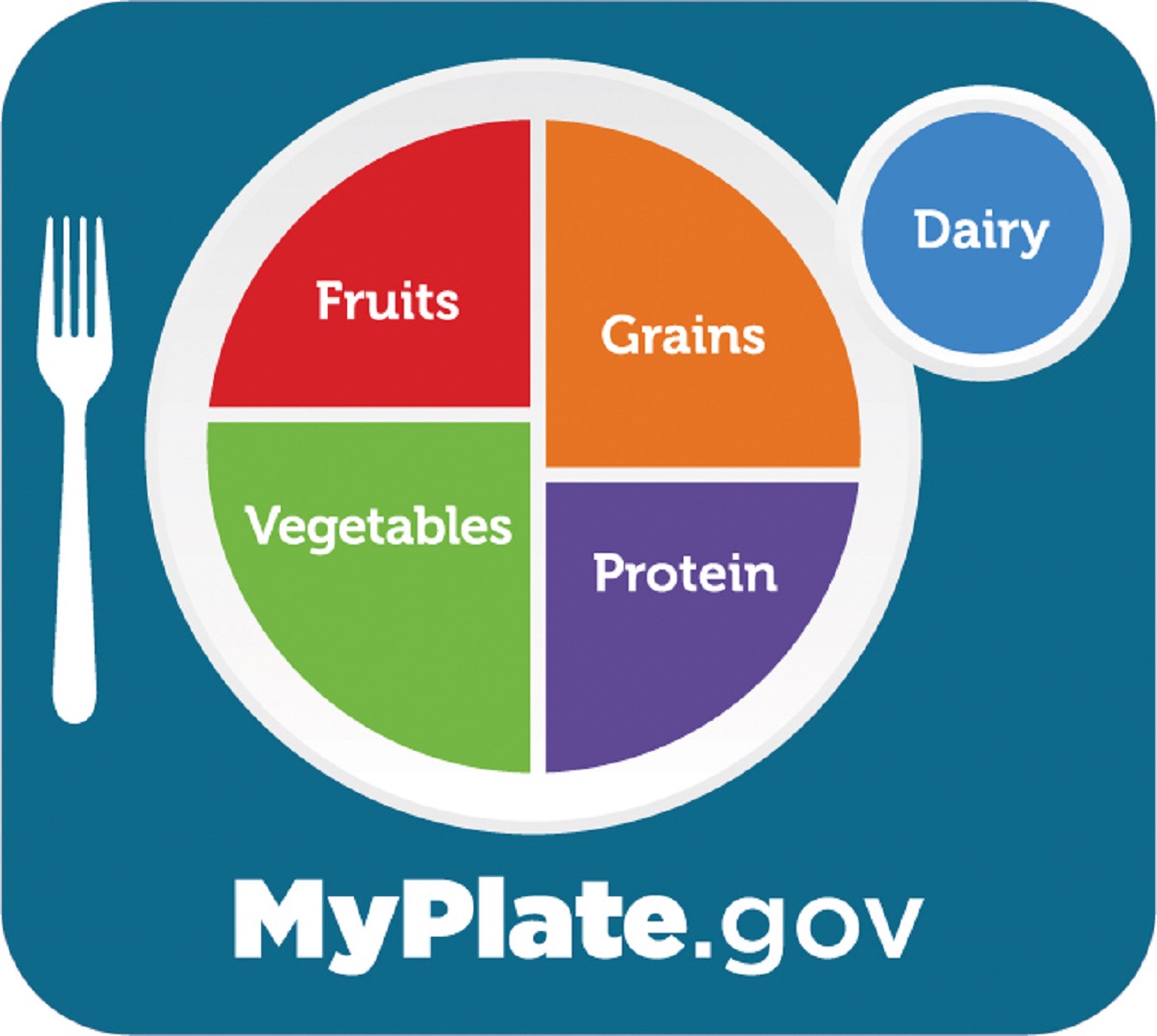The nutritional requirements of seniors are different than for younger people so the food period has revised. Older adults are likely to experience a loss of muscle mass, memory loss, weakness, and a weakened immune system. Their diet should be 50% fruits and vegetables, 25% fiber, and 25% lean protein.
Think back to health class as a young person in school. Remember being told about the “basic four food groups” of milk, fruits and vegetables, meat, and grain products? Since we learned about this as children, nutritionists have recognized that healthy eating should look more like a pyramid than earlier thought. Interestingly enough, the food pyramid for older people is even more specialized than for younger adults.
Whether you are a caregiver, a family member trying to navigate senior nutrition for your loved one, or a senior citizen doing your own meal planning, we have excellent nutritional advice for you.
Why Has The Food Pyramid Changed For Senior Adults?
Many people assume that the food guide pyramid is the same for everyone; however, nutritional needs are typically created for people who are average healthy adults. The dietary recommendations for senior citizens need to consider the impact of aging on muscle mass, nutritional absorption, etc.
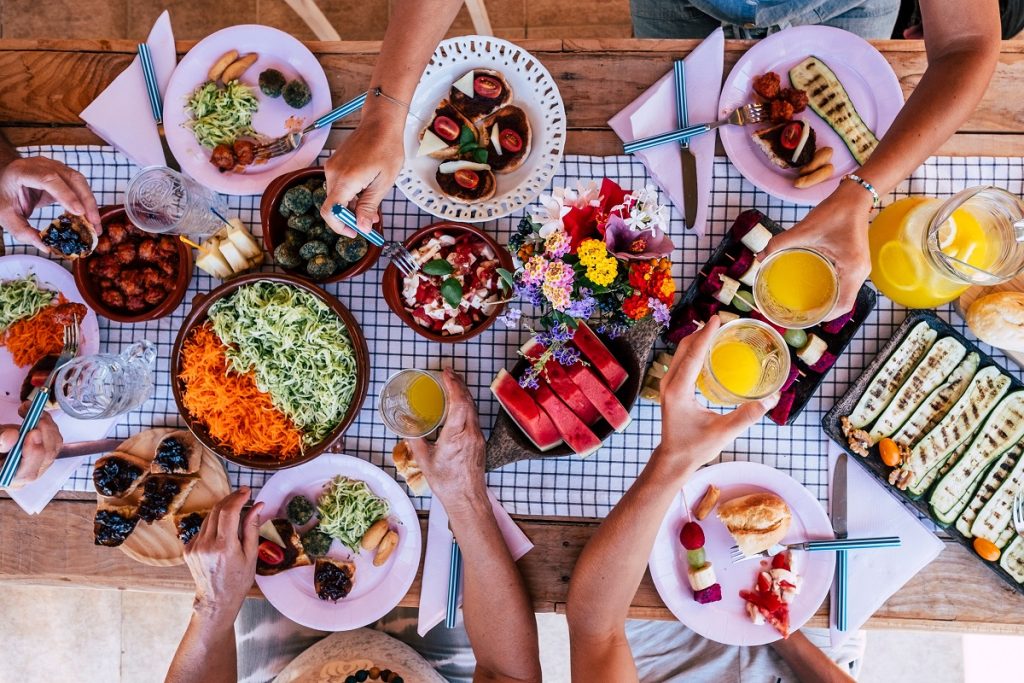
To summarize, the recommendations of dietary needs for older adults state that 50% of the foods consumed should be fruits and vegetables, 25% whole grains, and the remaining 25% should consist of protein-rich foods. Protein-rich sources include lean meat, fish, dairy products, beans, and nuts.
The recommendation goes on to stress that older people should choose heart-healthy fats, use herbs and spices in lieu of salt, and make sure the items chosen are nutrient-dense foods.
What Is My Plate For Older Adults?
The USDA healthy eating plate, otherwise known as MyPlate, is a different way of looking at the food pyramid. MyPlate has dividers that illustrate the amount of each food category that should be consumed. With color-coded sections for veggies, fruit, grains, protein, and dairy, the visual cues help keep people on track with portion control. This should make healthy food choices easier.
My plate for older adults has the senior citizens getting roughly half of their nutrition from fresh fruits and vegetables, with the other half evenly distributed between whole grains and protein sources. In addition, maintaining a healthy diet includes adequate hydration by taking in a healthy fluid intake.
What’s on MyPlate for older adults varies by age, sex, weight, height, and physical activity.
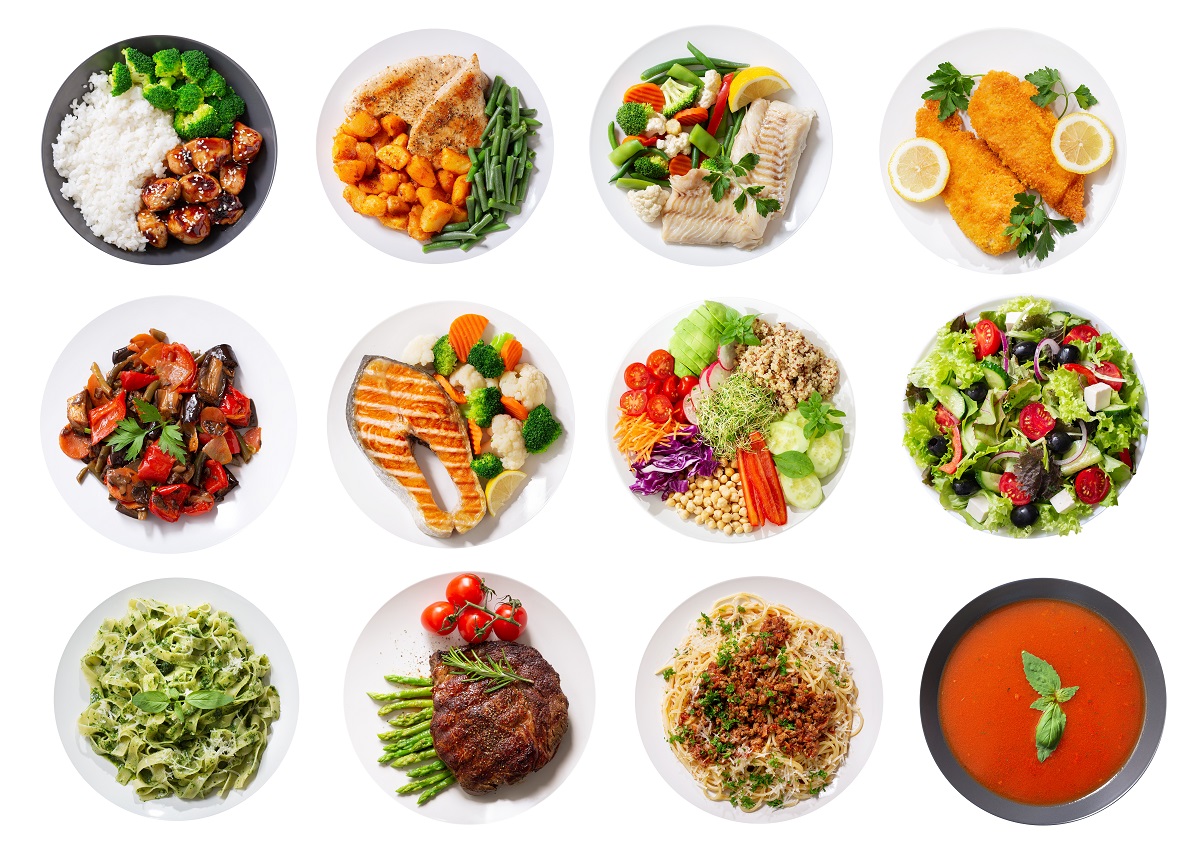
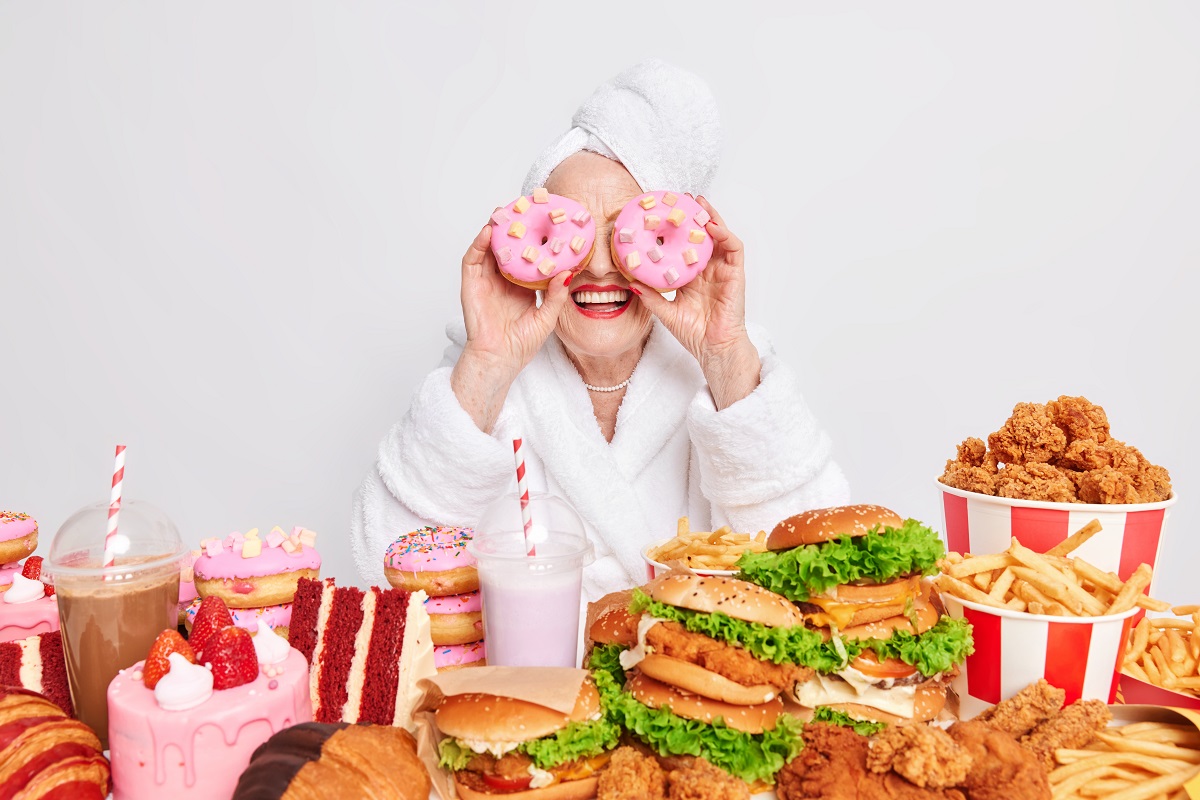
ThE Food Pyramid For Elderly Diners
Let’s talk about foods best for the elderly to consume and maintain better health. According to research out of Tufts University, dietary guidelines for seniors are different than their younger counterparts. Professor Alice H. Lichtenstein, a dietary specialist and Director of Cardiovascular Nutrition, did extensive research on good food choices for older adults.
When choosing food groups to eat from, older adults should keep the recommended servings in mind. Most Americans eat way more protein than they need. In fact, older adults should only get about 25% of their food from protein sources, and they do not have to be meat. When choosing meat, try to eat fish, chicken, or turkey more often than red meats. Beans, lentils, and eggs are also excellent protein sources.
Choosing foods that are low in saturated fat can help prevent heart disease. Eating at home instead of in restaurants and avoiding highly processed foods can help you eat healthy fats and keep bad fats in check.
Carbohydrates (25%) can come from whole grains such as cereals, bread, brown rice, and some vegetables. Although a huge side of buttery mashed potatoes sounds delicious, a sweet potato with a touch of butter is a better choice. Carrots and corn are both healthy carbs, as are bananas and many fruits.
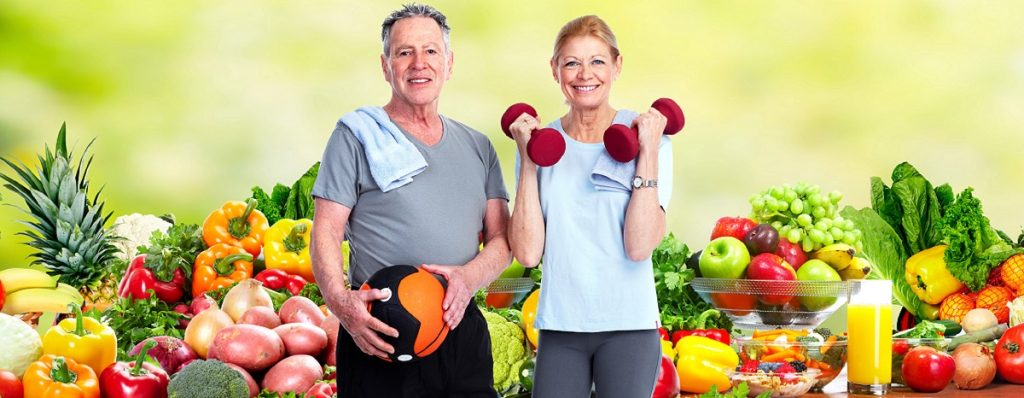
Senior citizens should get 50% of their food from fruits and vegetables for optimum health to help avoid chronic disease and prevent obesity. In addition, getting at least some physical activity each day is also important.
Certain vitamins and minerals are also important for older adults, so try to pick foods rich in these items. Vitamin B12 is one of these and can be found in liver, beef, clams, tuna, trout, and milk. Also found in fortified foods such as cereals, this is one vitamin that many people find helpful to get by taking supplements.
Vitamin D is another thing that older adults need. Also found in fatty fish, milk, and orange juice are frequently fortified with Vitamin D. Older people also need calcium to maintain healthy bone density.
Why Do Some Seniors Have Difficulty Eating Healthy?
- Decreased sense of taste or smell, which makes food unappealing.
- Dehydration can lead to a loss of appetite.
- Depression and lack of desire to eat alone.
- Difficulty planning and cooking meals.
- Financial constraints often lead to seniors not eating as they should.
- Illnesses that contribute to loss of appetite.
- Loneliness
- Struggling to chew or swallow.
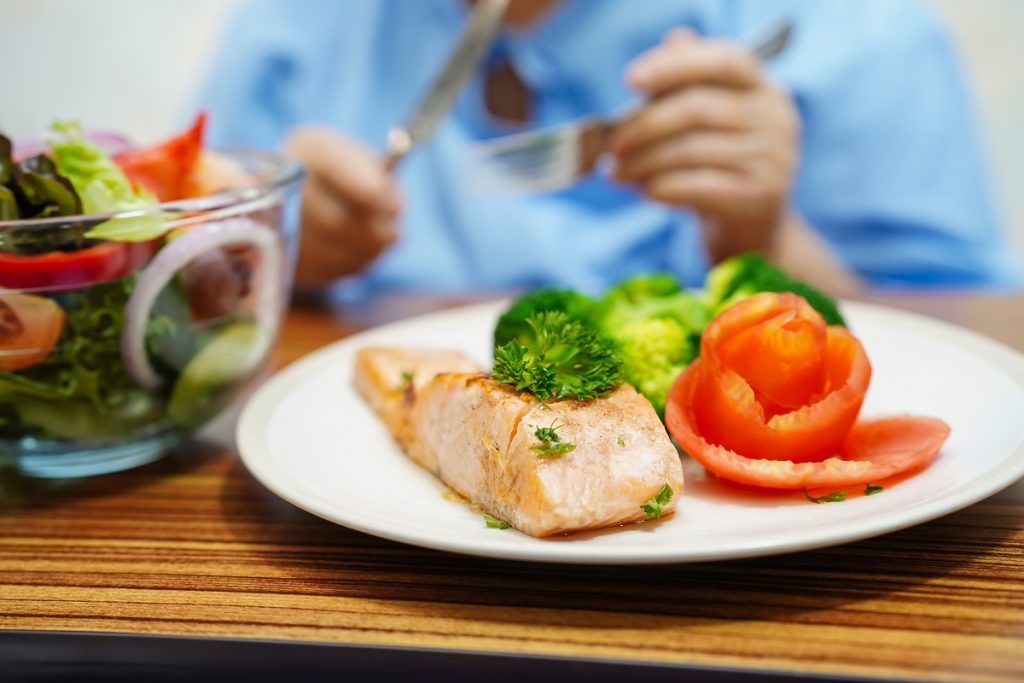
What Is A Balanced Diet For Seniors?
So what is a balanced diet for seniors? Let’s look at some meal examples. Breakfast could consist of scrambled egg whites with fruit and whole-grain toast. Another example is steel-cut oatmeal with fresh fruit mixed in. If you just aren’t hungry in the morning, a protein shake mixed with a milk product could replace breakfast.
Lunch does not have to be unhealthy or boring. A lettuce salad can have spinach and kale tossed in for extra color and vitamins. Adding a colorful array of cut veggies to the salad gives you a variety of foods, tastes, vitamins, and minerals. Tuna, chicken, and hardboiled eggs all make a good protein addition. Try not to overdo the salad dressing. If salads aren’t your thing, a veggie omelet with whole grain toast, a veggie wrap with turkey lunch meat, or something easy of that nature are other choices.
Do you find healthy suppers daunting? Some chicken breast with a couple of vegetable sides make for an easy supper. Veggie burgers can be cooked in a flash and taste great cut up on top of some quinoa with peppers, mushrooms, and onions folded in. In other words, meals don’t have to be fancy to be nutritious and delicious.
What Are Some Easy Ways To Keep Seniors Eating Healthy?
Keeping your meals easy and consistently healthy will promote overall well-being. Consider food prepping ahead of time, so you always have cut-up veggies and fruit to grab and munch on the go.
If you or your loved one finds meal preparation to be challenging or not worth the effort, maybe consider Meals on Wheels if it is offered in your neighborhood. Senior centers also provide meals for older adults, so they are not always eating alone.

